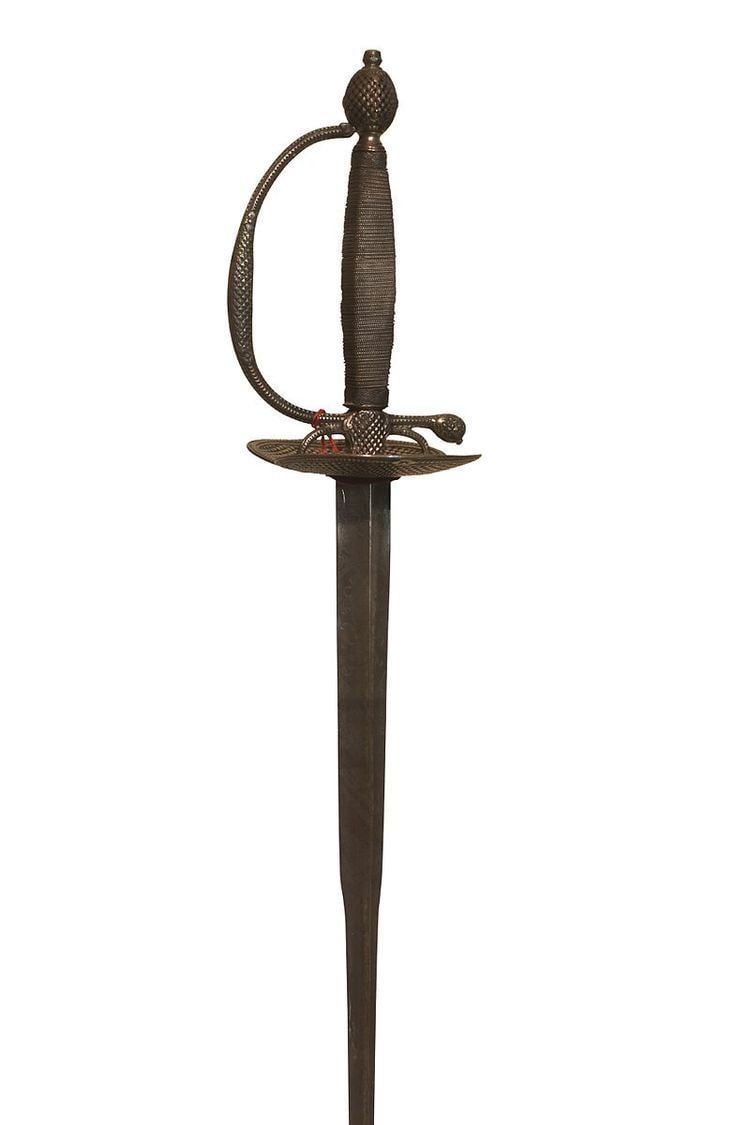 | ||
Colichemarde is a type of small sword blade that was popular from the late 17th century to the middle 18th century.
Contents
Overview
The small sword is considered to be a descendant of the "transition rapier", which itself evolved from the rapier due to the demand for a lighter sword better suited to parrying. The shape of a colichemarde blade features a wide forte (often with several fullers), which then tapered drastically toward the point after the fullers ended. The blade cross section was hexagonal or diamond shaped. This configuration combines good parrying characteristics with good thrusting characteristics. Its lighter weight and superior balance compared to the rapier allowed faster and more accurate movement of the blade, allowing the fencer to place a more precise thrust on their adversary.
Brief history
The colichemarde blade configuration is widely thought to have been an invention of Graf von Königsmark, due to the similarity in pronunciation of their names. However, the first blades of this type date from before the Count's lifetime. The colichemarde first appeared about 1680 and was popular during the next 40 years at the royal European courts. It was especially popular with the officers of the French and Indian War period. George Washington was even gifted one during his inauguration.
This sword appeared at about the same time as the foil. However the foil was created for practicing fencing at court, while the colichemarde was created for dueling. It made frequent appearances in the duels of New Orleans. A descendant of the colichemarde is the épée, a modern fencing weapon.
With the appearance of the pocket pistol as a self-defence weapon, the colichemardes found an even more extensive use in dueling.
Popularity of the colichemarde declined when rapiers went out of fashion, the advantage of the colichemarde being that it was faster and more maneuverable than the rapier but with a wide forte to help parry the heavier rapier blade. As small swords evolved into even smaller, lighter weapons, the colichemarde was suddenly at the same disadvantage as the rapier had been when the colichemarde was introduced, and a wider forte was of no advantage against lighter small swords.
